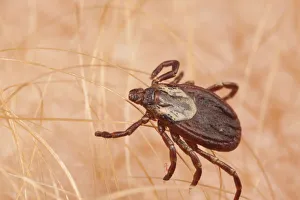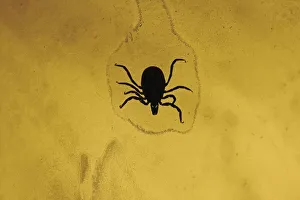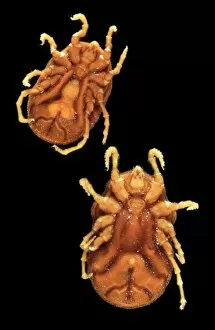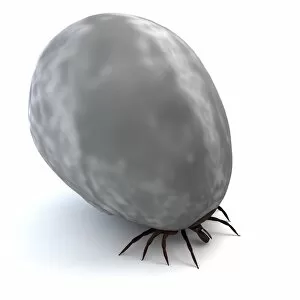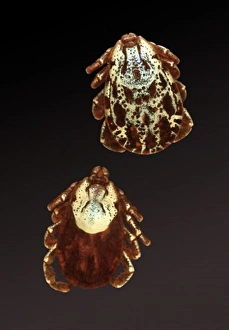Ixodida Collection
Ixodida, commonly known as ticks, are tiny arachnids that can be found in various parts of the world
All Professionally Made to Order for Quick Shipping
Ixodida, commonly known as ticks, are tiny arachnids that can be found in various parts of the world. One such species is the American dog tick (Dermacentor variabilis) adult female, which was captured in Morris Arboretum located in Philadelphia, Pennsylvania. Its distinct appearance and presence serve as a reminder of nature's intricate biodiversity. In Chicago, Illinois, a cottontail rabbit (Sylvilagus), specifically a leveret, was spotted with ticks on its mouth. This image captures the unfortunate reality that these parasites can affect not only humans but also animals within urban environments like bustling cities. Traveling across continents to Germany in Europe brings us face to face with another tick species - the Castor bean tick (Ixodes ricinus). Found amidst lush greenery and natural landscapes, this particular specimen showcases the adaptability and resilience of ticks even in different geographical regions. Ornithodoros parkeri is yet another fascinating member of the ixodida family. With its unique characteristics and behavior patterns, it adds to our understanding of these intriguing creatures' diverse traits and habitats. The blood-filled ticks depicted through artwork F006 / 2535-2532 provide an up-close look at their feeding process. These images highlight both their ability to survive by consuming blood from hosts and their potential role as vectors for diseases if left unchecked. Even microscopic details have been explored through scanning electron microscopy (SEM), revealing intricate structures such as the tick anus. Such scientific investigations contribute valuable insights into their anatomy while showcasing technological advancements aiding research efforts. Lastly, we encounter Dermacentor andersoni - better known as the Rocky Mountain wood tick - reminding us that ticks inhabit various ecosystems worldwide. Their presence serves as a constant reminder for humans to take precautions when venturing into nature's playgrounds or exploring new territories where they may lurk. Ixodida encompasses a wide range of species, each with its own unique characteristics and habitats.

